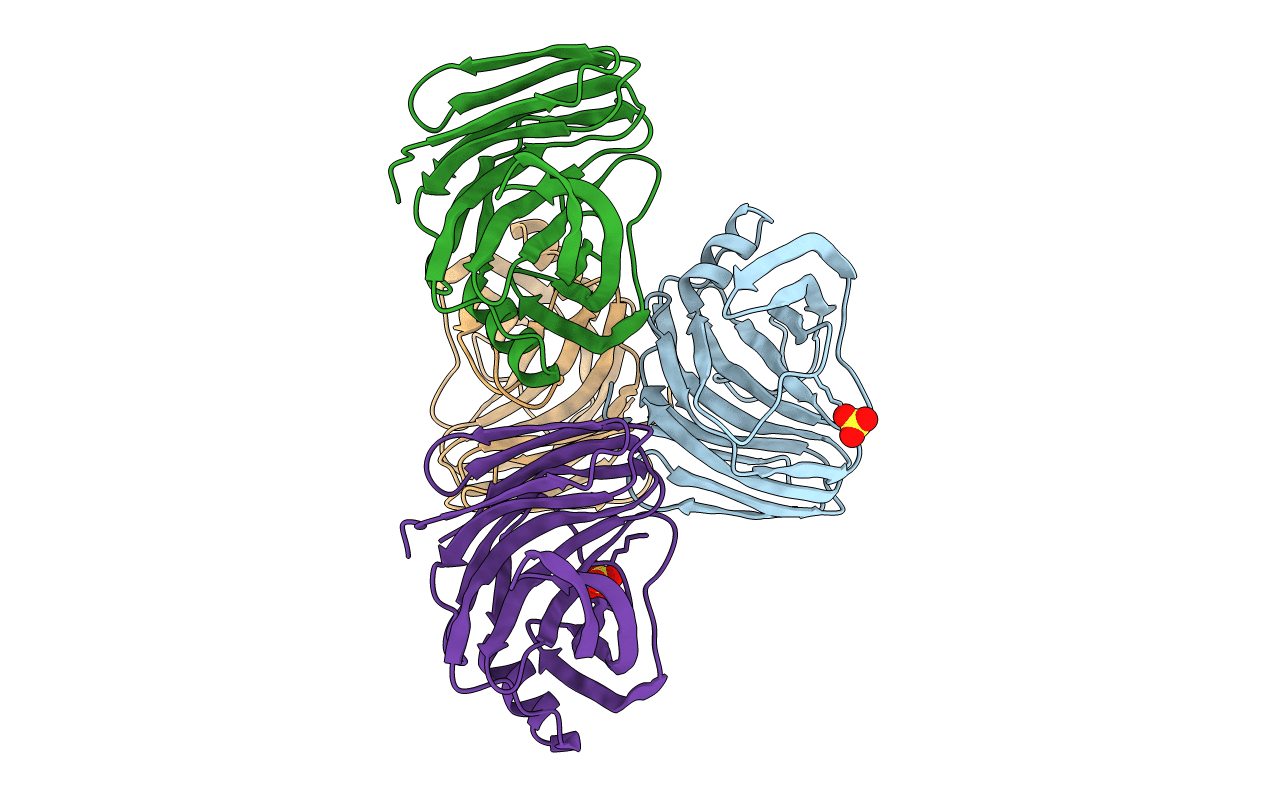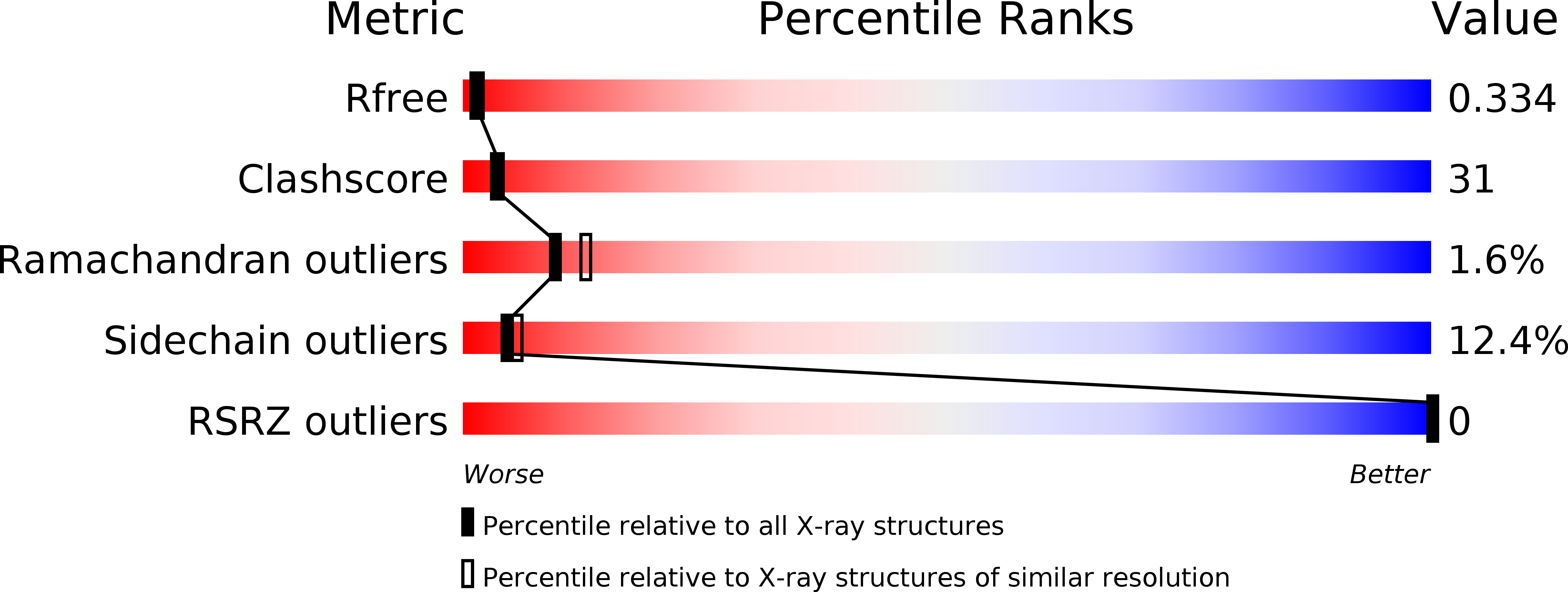
Deposition Date
2012-10-14
Release Date
2013-05-08
Last Version Date
2023-11-08
Entry Detail
PDB ID:
3VZJ
Keywords:
Title:
Crystal structure of the Bacillus circulans endo-beta-(1,4)-xylanase (BcX) E172H mutant
Biological Source:
Source Organism:
Bacillus circulans (Taxon ID: 1397)
Host Organism:
Method Details:
Experimental Method:
Resolution:
2.41 Å
R-Value Free:
0.34
R-Value Work:
0.23
R-Value Observed:
0.24
Space Group:
P 1 21 1


